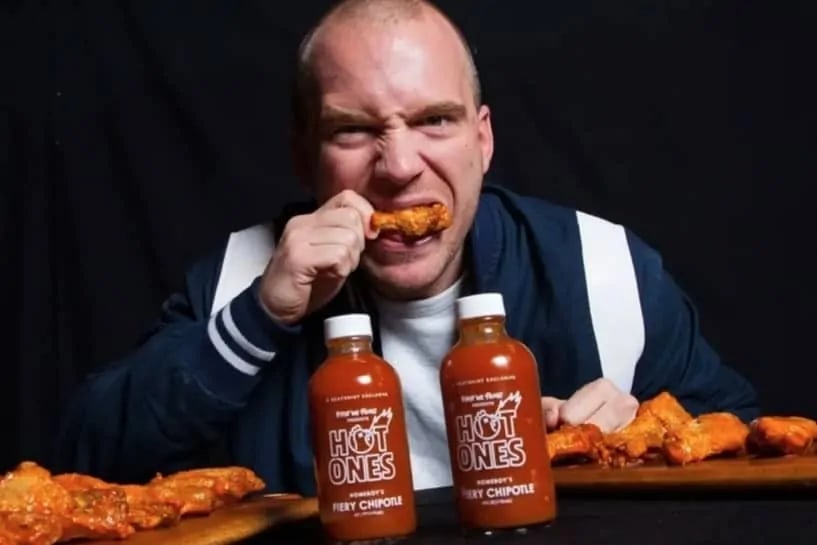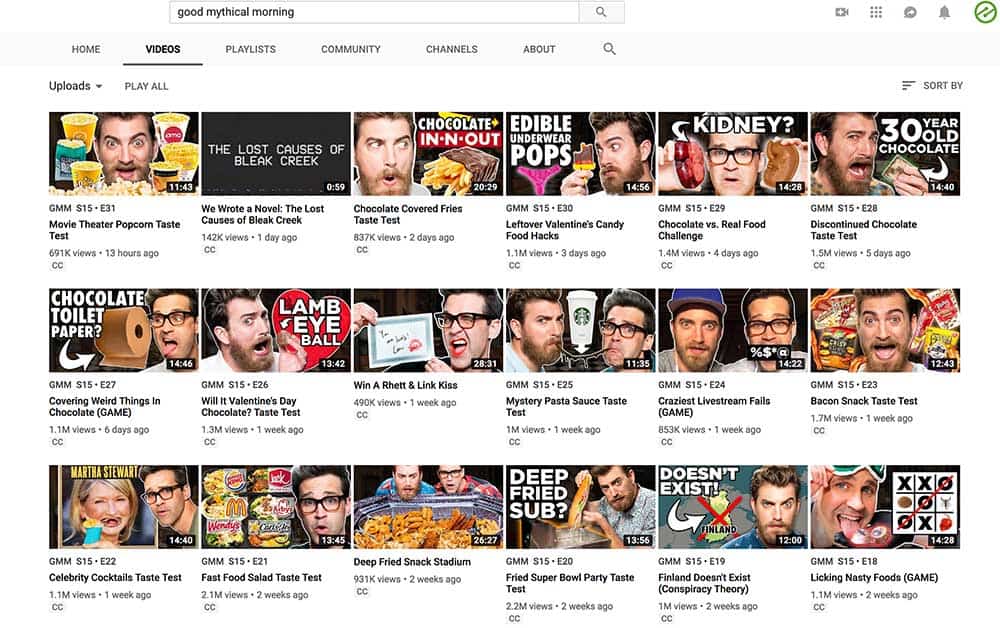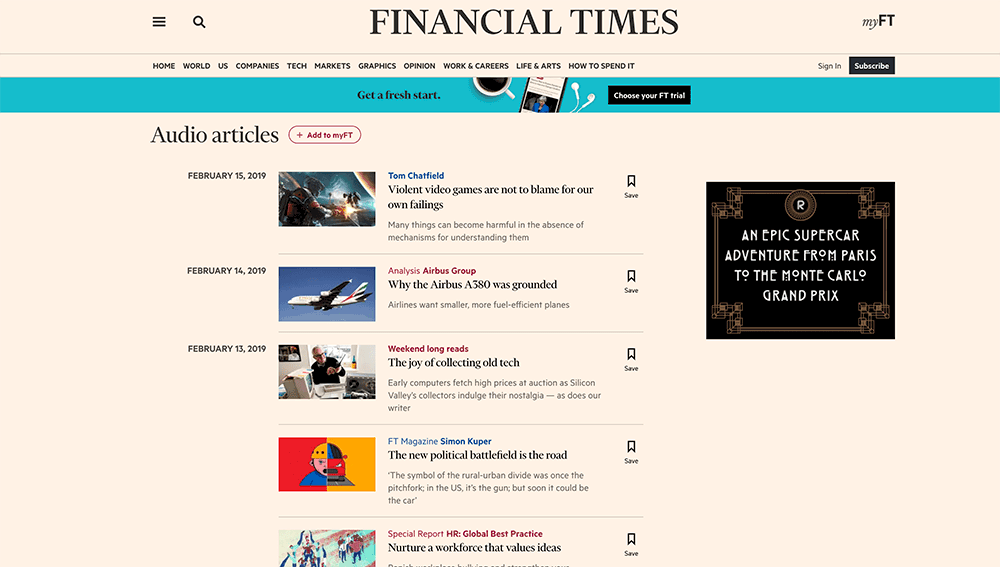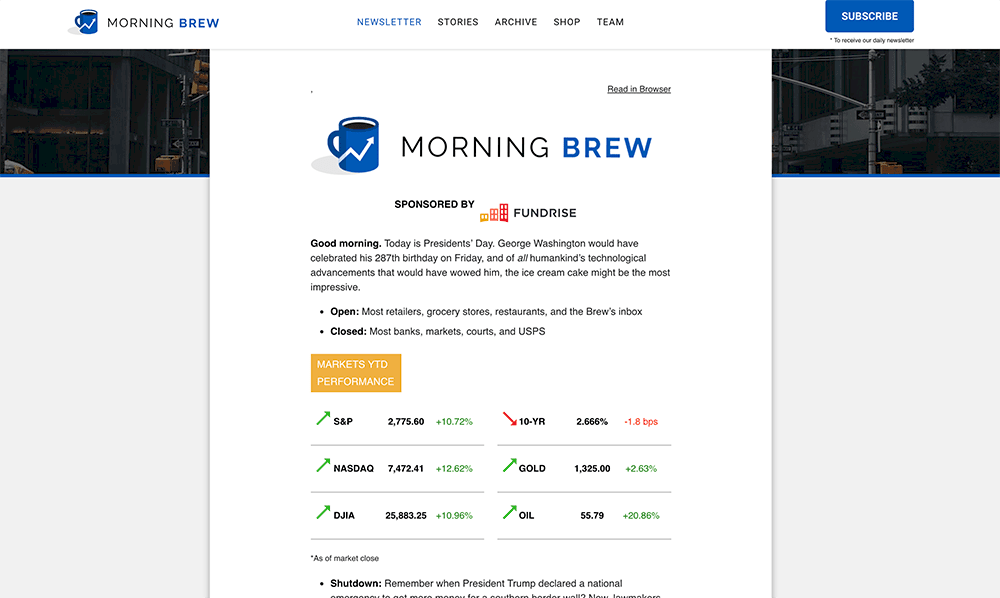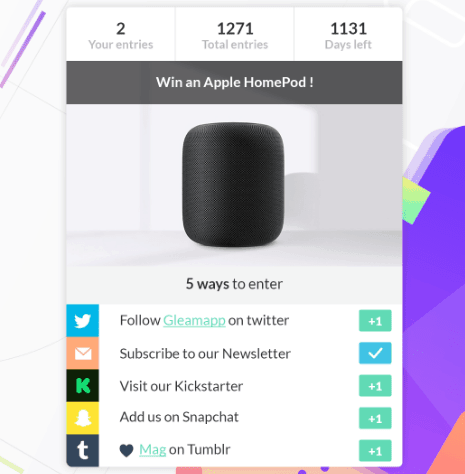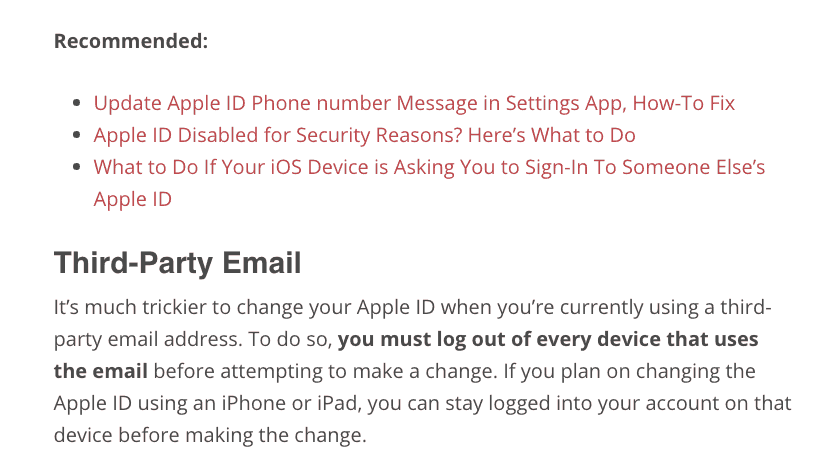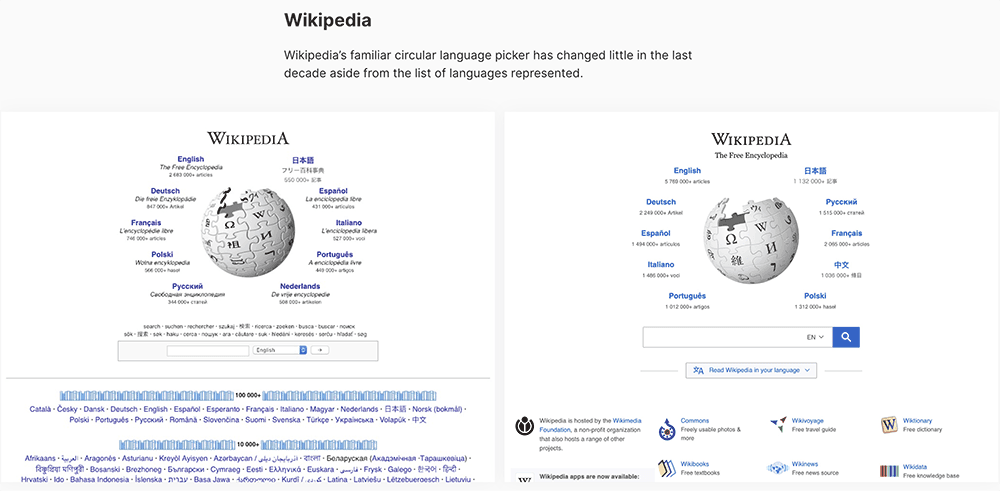6 Content Creators That Are Changing Digital Publishing in 2019
I believe I would be hard-pressed to find a content creator that wants to produce boring content that is stagnant and unprofitable. Publishers are consistently working hard to rank higher in searches, provide a more valuable experience to users, and increase their total revenue. This often starts and ends with their content strategy.
That’s why it’s so sad that 91% of online content is never seen.
In a seemingly never-ending sea of blog posts, videos, podcasts, and newsletters, what are the top 9% doing differently from everyone else?
Maybe counter-intuitively, one of the best ways to stand out as a publisher is to pay attention to other publishers that are setting new trends. Picasso himself said, “Good artists copy. Great artists steal.” So, what can you learn from 2019’s hottest — and fastest growing — content creators?

Looking at content creators that are driving new publishing trends
Below, we decided to look at six publishers who have proven to be successful doing something new, ground-breaking, or fundamentally different from others in their niche.
These publishers provide some new ways to think about:
- Content strategy
- Media platforms
- Monetization strategies
- Connecting with loyal audiences
- Marketing content around the web
- …and more
These content creators all represent emerging digital publishing trends that offer a lot of potential growth opportunities for other publishers that may be able to leverage similar techniques.
So… who are these folks?
Content Creator #1 – Good Mythical Morning
Good Mythical Morning is a YouTube show that has over 15 million subscribers and more than 5 billion views.
The daily talk show has been featured on The Tonight Show with Jimmy Fallon. The show creators have even been featured in Super Bowl ads and other collaborative efforts across media platforms.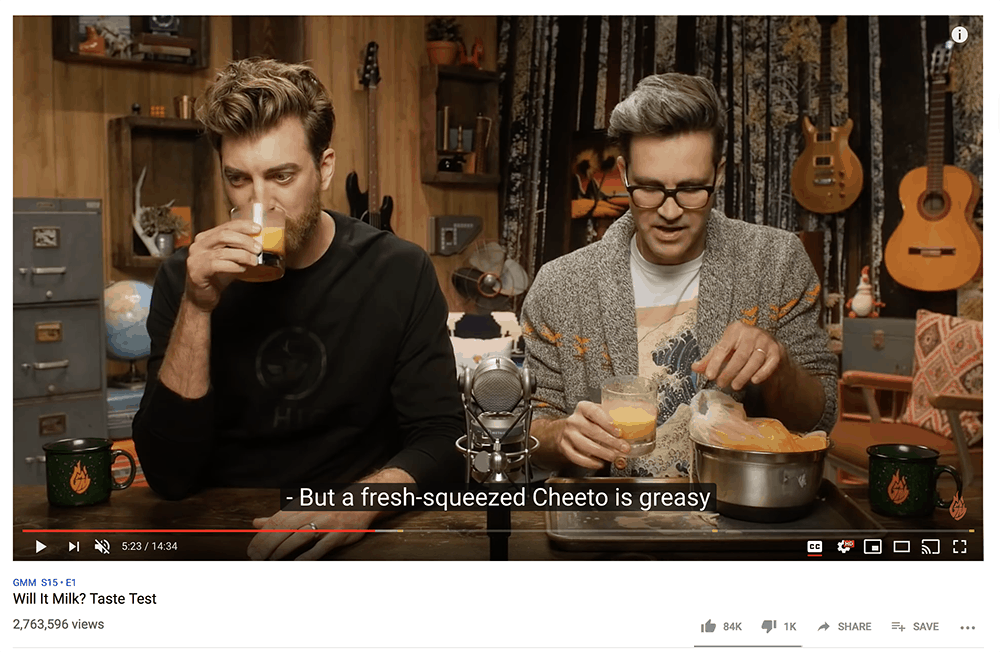
Show creators, Rhett McLaughlin and Link Neal, use Good Mythical Morning to merge popular topics with entertainment. In their show, they are willing to try just about anything —taste test fast food salads, attempt to pickle or make chips out of strange foods, and play games like ‘Guess That Celebrity Tattoo.’
The show has gained so much popularity that network television showrunners actually come on their YouTube channel as a means of promoting their shows on T.V.
Not every publisher is going to make it onto late-night television or find their level of YouTueb fame, but there are some key pointers we can take from their success.
Focus on the little things
Good Mythical Morning, first and foremost, has found a niche and has created content that has produced a loyal following. They’ve combined popular culture, style, brands, and ideas into entertainment.
One of the keys to their success is their wacky video thumbnails. Popular YouTube creators claim that spending long hours honing the perfect thumbnail can be the difference between a video that gets almost no attention and a video that goes viral across the web.
What you don’t do can help you succeed
Additionally, while a lot of publishers are trying to figure out ways to work directly with brands, Good Mythical Morning has actually avoided this for the most part. Though they do have some sponsors incorporated into the show, most of their ads are just sold programmatically on YouTube.
By not associating with a specific brand, the publication has given themselves the flexibility to try pretty much anything. If Rhett and Link host a bacon snack test to see which bacon snack is the most authentic, they are not limited to any particular brand of bacon or snack company.
In addition to this, their strategy has also made the publication extremely searchable.
For example, if people search ‘what’s the best Starbucks drink,’ Good Mythical Morning often show ups in those search results (not just on YouTube but in Google Search too). If someone searches ‘which Colorado pizza is best,’ they have an entire episode dedicated to Colorado pizza.
The diversity of their subjects and the flexibility they have without brand association allow the show to be served as a search result frequently. This makes the content entertaining and engaging which means that it sits atop a lot of video recommendations and Google search results.
To top it all off, because there are so many brands mentioned in the videos, their channel receives premium ad rates because brands are willing to pay good money to have ad space on a video that features popular products or services. It is likely these brands will bid higher for these places than other locations, which in the end brings the content creators more ad revenue.
Content Creator #2 – The Financial Times
In a previous blog post, I discussed how The Financial Times is reaching newer, younger audiences and creating loyalty amongst these readers by partnering with universities through curated newsletters without a paywall.
Latch on to someone else’s newsletter
Whether or not you’re a publisher that would do a newsletter, this method by The Financial Times is a good example of a publication partnering with another entity to either acquire subscribers or leverage the reach of a 3rd party to promote their content.
Perhaps there are newsletters out there that you could partner with to share your content weekly?
Get into the audio game using existing content
The Financial Times is also currently using audio uniquely through an audio daily news briefing that is optimized for smart speakers — like Google Home and Amazon Alexa — to drive more daily visitors.
Audio is really one of the fastest growing and most profitable forms of content. If you produce a lot of content each week, audio is a great way to get information out there quickly and succinctly that might be more time relevant for your audience.
Perhaps an easy way to get into audio, or podcasting, would be to summarize specific topics, weekly content, or other aspects of your existing written content and offer it to your audience in some form of audio.
You can learn more about Voice Search optimization here if you do.
Content Creator #3 – The Morning Brew
We often think of the primary sources of traffic as coming from one of the major platforms, but The Morning Brew is a good example of a newsletter publisher succeeding outside of those realms.
The publication has over 1 million subscribers and accumulated over $3 million in revenue last year.
Most publishers see newsletters, as a supplement to existing traffic that also diversifies some risk from their other channels. However, newsletters offer one of the most consistent and safe forms of traffic. The value in being able to drive traffic to your site via email is invaluable.
Make building newsletter subscribers more than just a supplemental strategy
If you were to produce a newsletter that goes out once a day, you could potentially acquire some major traffic.
Looking at the success of newsletter publications like The Morning Brew, you should pause and consider how you could use newsletters as a major source of traffic.
If you could invest the majority of your time in a newsletter rather than your website, what would your successful newsletter look like?
A lot of publishers have found massive success using giveaways and contests using affordable solutions like Gleam. These tools allow you to give away a product or service to your audience in exchange for having them subscribe to your newsletter or follow you on social media.
Simply embedding a contest in your sidebar for a few weeks may help you grow your newsletter list by thousands. All for the cost of something simple like a smart speaker. Imagine how affordably you could grow a list of 20-30K newsletter subscribers?
Content Creator #4 – Hot Ones (Complex Media)
Complex Media’s Hot One’s is published on YouTube.
It is a pretty basic concept on the surface —it’s a celebrity interview show that includes eating a series of progressively hotter chicken wings. Personalities like Seth Meyers, John Mayer, Natalie Portman, and Rhett and Link from Good Mythical Morning come on the show, and the host asks them about their lives and most recent projects.
As simple as it may seem, the show has risen to high popularity over the last four years and now has 138 episodes with over 391 million views.
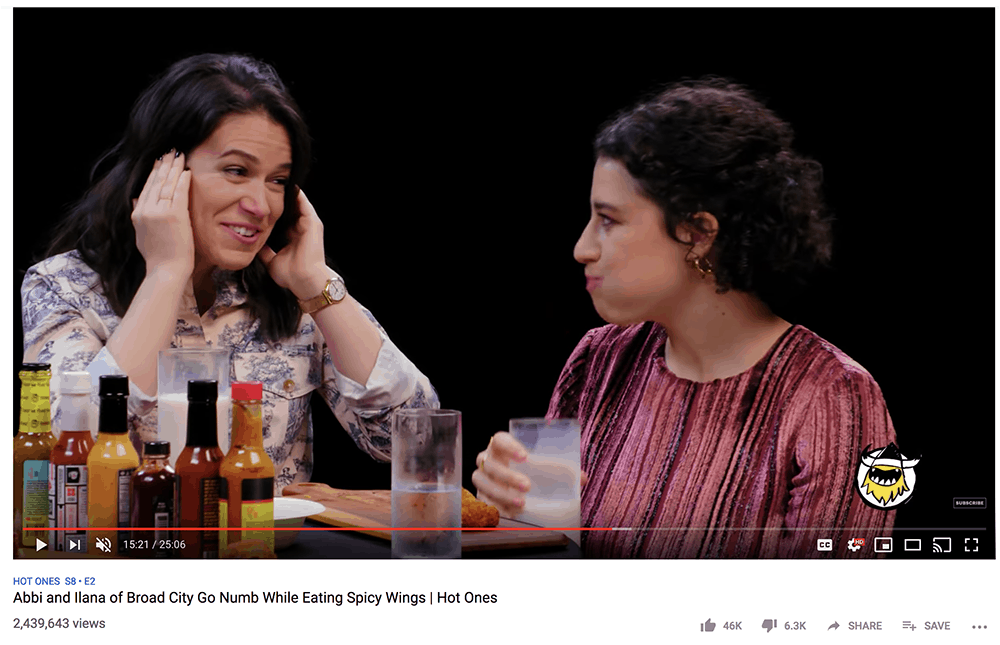
Think outside the box for new revenue
It seems intuitive to think this publication generates the majority of revenue through the same monetization strategies as most YouTube publishers.
Surprisingly enough, the show actually generates approximately 85% of its total revenue from hot sauce sales! This is all on top of its traditional forms of revenue, like ads.
Rather than working on affiliate deals, this is a publisher has become hyper-focused on one specific product that they know the audience is interested in. Viewers want to try the hot sauce that made Seth Rogan gag and Tyra Banks cry for her mom.
They actually work directly with a hot sauce 3rd party to white label products that they actively sell and promote.
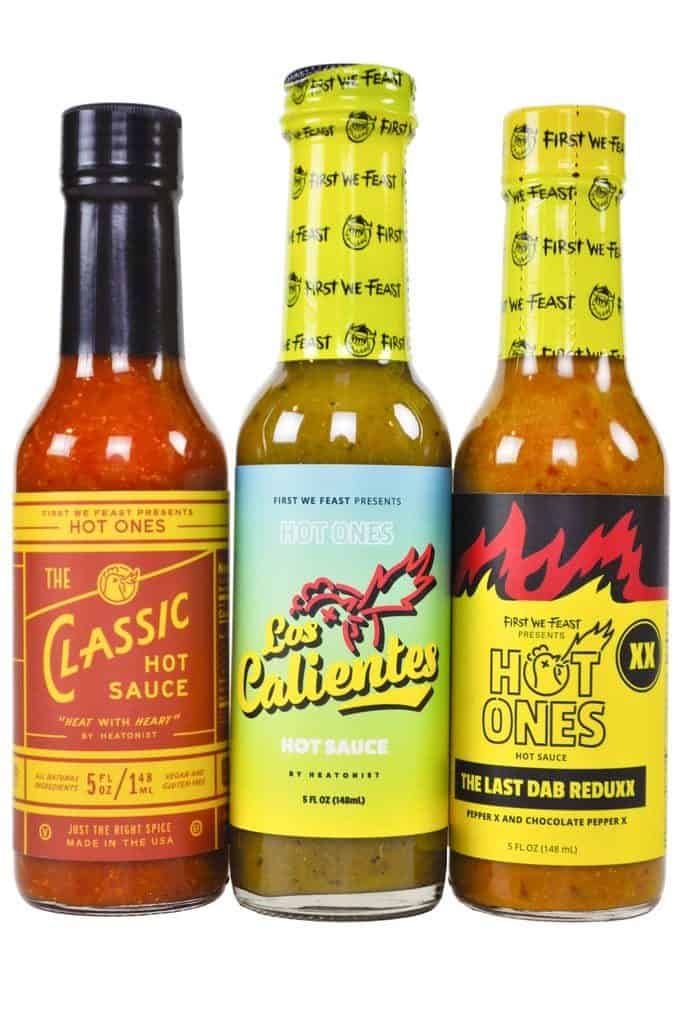 Could your site white label a product for sale?
Could your site white label a product for sale?
What we can learn from Hot Ones is to consider if there are features of your website that lend itself to a product that you could actually have made, and then sell that product to your visitors.
It’s important to continually find ways to engage with your audience and a simple physical product could both create loyalty and bring you extra revenue.
Content Creator #5 – AppleToolbox.com
AppleToolbox.com is a great example of your classic evergreen publisher that creates tips, tutorials, and how-tos on all things Apple-product related.
Learn from the most engaged and highest earning visitors
They are successful — in part — because they know what content drives traffic and which content is the most engaging to their readers. They use tools like Ezoic’s Big Data Analytics to sort landing pages by engagement time and EPMV to learn what types of content are driving the most engaging visits and highest earnings.
What’s old is new again
Something else AppleToolbox does exceptionally well —which we highly recommend for any publisher —is they go back and augment their old content based on keywords that it ends up ranking for that they might not have originally intended it to.
After content has been out on the web for a while, it may end up ranking for a lot of different keywords. Many of those keywords might not be precisely what that article is about.
By learning which keywords articles rank for, publishers can go back and add content that is more appropriate to those articles to improve how they rank for those keywords (just adding content, not changing any of the existing content). Start by looking to see which articles rank for keywords just off of page 1 of search results for the highest return on the time you invest in this strategy.
Get the most out of all your content
AppleToolBox also focuses on internal linking that drives visitors to additional pages within the content itself.
When Apple Toolbox publishes an article about a specific topic, they go back to their old posts and add a reference and link so readers can find that new article. They also then add updated information on the old blog if the information is no longer relevant or needs a few changes. Then, they include a backlink to the older blog in their new blog.
Augmenting old content and linking back to it in newer content keeps your website relevant, gives you the opportunity to appear in more search results and helps you get the most out of all your site’s content.
Content Creator #6 – Wikipedia
Wikipedia? Are they hot and innovative?
When publishers try to be innovative, they often immediately think about how to update their site’s design and make it more modern and user-friendly.
Nothing beats a classic
One of the things that Wikipedia has done really well is that they’ve hardly changed their website at all over the past 10 years. If you look at Wikipedia from 10 years ago and compare it to their web site today, it largely looks like the same site.
Wikipedia knows what they do really well, which is open-source, user-generated content. They have kept their website design simple, recognizable, and extremely easy to navigate, which leaves little room for formatting errors.
What we can learn from Wikipedia is that it may be more important for your visitors to keep things simple. For some publishers, pivoting to the next big trend or relying on design to make your website more appealing could actually be bad for your users and website.
Ultimately, what your publication looks like might not be nearly as important as the strategy you choose to drive engagement and loyalty long term.
What to take away from all 6 content creators…
Based on the six content creators we reviewed, here are some questions you can ask yourself about your brand, blog, or site that might help you leverage their success on your property.
Good Mythical Morning: What niche does your content fill? How can you incorporate popular media into your content to rank higher in searches? Is it more beneficial to partner with a specific brand or could you use freedom from brands to your advantage?
The Financial Times: How can you partner with an outside entity that can help you share your content with a larger audience? Is there a way you could start embedding audio into your content by easily recording audio around your existing written content?
The Morning Brew: What would your newsletter look like if you went ‘all in’? Could you use contests or giveaways to build a powerful driver of weekly or daily visitors?
Hot Ones: Is there something from your content that could become a physical product to sell to visitors? Is there something you could have made that would add value to your overall website and bring in additional revenue?
AppleToolbox: What can you learn from your most engaged visitors? Where can you add links within your content to other articles you’ve written? What are people searching for when they land on your highest earning pages?
Wikipedia: What are you already doing well that doesn’t need to change? Do you often worry about how something looks more than how effective it is?
Questions? Comments? Suggestions? Feel free to leave a comment below and I’ll try my best to answer.
